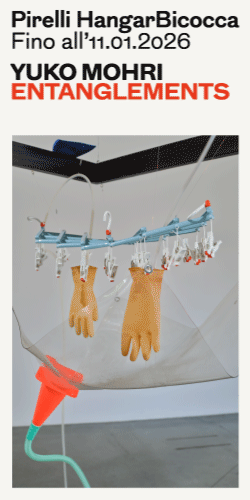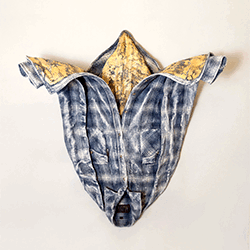[nemus_slider id=”68454″]
—
FLIP Project Space is an independent curatorial project presenting various discussions and creative collaborations in relation to contemporary artistic practice. The activities of FLIP Project Space are presented within a multiplicity of spatial situations where discussions take shape as exhibitions and printed/digital publications. Formally initiated and based in Napoli, Italy, FLIP is motivated by continuous change in location and spontaneous occurrences that intern contribute to its multi-layered discourse. We are invested in grasping the contemporary milieu through physical and virtual local specificities that trigger opportunities for the manifestation of curatorial projects. The formation of our practice is defined by our mobility and close contact to different contextual realities or imaginaries and the emerging ambiguities.
—
Rumors and continuities of
a certain
modernism baroque.
Notes on a project in progress
Text by Beto Shwafaty
The following images are part of a project currently being developed, involving a revision and critical interest in certain episodes of Brazilian modernism. Through documental photographs, textural pieces and sculptural elements, certain established aesthetic systems and value standards are explored. At the same time, there is an intrigue about the unfulfilled promises and utopias of the past – and about the related framework of knowledge that was generated – there is also disillusion that comes from the perception that they would still seem to be in a stage of lethargy, of hibernation.
It all starts with curves: of the female figure, of the mountains and of the waves. Then a people arises, requiring a new artistic perspective to support the exploits of the past. A leader and his agents are also needed, building new paths, images and places … They say that glimpsing that which has yet to come whilst also perceiving achievements and failures alike, is an indispensable part of any project.
But there is also a certain effect – that would seem to be instilled in the local cultural imagination – exerted by a curvilinear landscape resulting from contour lines of the excavations and of the sinuous cutouts that channeled the mined land. Such landscapes offer us clues that allow us to read a certain (so-called official) part of the National Modern Architecture, like a possible complementary inversion of the voids left by the mining cycles of the past, in other words, linked to certain old-fashioned values rooted in exploitation. Construction and excavation, a negative and positive of each other, synchronized and in constant motion, feeding cycles of exploitation and progress.
For artist, architects and other hybrids (who would later be called designers, but we can also include certain kinds of administrators, poets and governors), Modernism meant a new perspective, albeit a difficult one to accept. It intended to shock, turn bourgeois tastes and customs upside down, shape a new political ideology to build a new society by establishing new social regimes of material production and subjective production of life. If European Modernism proposed a clean-up of ornaments and other pendants as a radical and austere way of breaking from the oppressive values of the past; the Baroque, as opposed to the Renaissance, was assumed as anti-classic, bastard and radical art. Thus, in both there would be an attitude of opposing the rules in force. This allows for certain functional comparisons to be made between these manifestations, however many of the iconic works of our Modern Architecture seem to exist in a logic that opposes this orientation.
So, we could ask: and was Modernism in our country no more than a reinterpretation, an update of certain past values linked to a peculiar and local form of the Baroque? What results could we identify in this hypothesis?
Beyond the progressivist arguments and political promises of modernization, our artistic root resides in the Baroque. It is our antiquity, defends Lucio Costa. But, the style pervaded our country to such an extent that it became more than an artistic form: from the profusion of details, ornaments and arabesques earmarked to occupy representative space, it was transformed into a way of life, a way of acting and of knowing, in parallel to the dynamics of colonization (the order of which was to occupy, albeit in a disorderly manner). It also expressed the taste of the absolute power, of the rural aristocracy, of the merchant bourgeoisie and of the indoctrinating power. It is not by chance that the wealth of the gold and from mining implanted the style as the visual language of the Colonial Empire, consequently infiltrating the formation of subjectivity and capturing the social imagination.
The argument in defense of a baroque origin created by Costa our “antiquity” might be situated on a Baroque-Jesuit slant, seen by many as impoverished and deprived of excesses, austere – as Modern Architecture should be – and at the same time unique, by the singular way in which the Baroque had been “originally” installed by the indoctrinating missions. There are also deadlocks involved in the construction of the Grande Hotel in Ouro Preto, with Niemeyer’s modern architectonic design, defended by Costa, which generated huge controversy about the (at time arbitrary) way in which history is faced and interventions made in its heritage sites. It is from these lines that we can observe the retrieval and permanence of the Baroque, not as a style but as a mindset that influenced the way in which National Modern Architecture was built, towed along by the new national powers.
So, the main program of this Modernism, the antiquity of which resides in the Baroque, serves the construction (or better still, the remake) of an artistic realm of power. They are images, shapes and arrangements of representation, connected to a kind of engagement that is not confronted as colonial but, perversely, is grounded in this past condition. A Modern Baroque, whose body of ideas generates an aesthetic project based on a constant of formal variations through time, which reveal not ruptures, but continuity. Such continuity extrapolates the formal sphere and in the end, reveals similar historic, economic and ideological purposes.
This contradiction was not so clear in the first half of the 20th century, when the aesthetic plans of the avant-garde to a certain extent coincided with progressivist political ideologies, which stood out as promises of both economic and social development. Yet if we recall the past of the Pampulha lake, for example, as a mining area and its modern architectural design as marks of a new expanding property and real-state landscape, we can understand them as the flip sides of the same coin: exploitation and progress. And such movements still reverberate in the ways in which certain current spheres of power employ a modern architectonic and aesthetic vocabulary to materialize its public presence through sumptuous, white concrete buildings covered in glass and tiles (the latter bear something of the technological and abstract, simple and iconic). They are without doubt constructions stripped of the excessive decoration and details of the Baroque, however, when taking a step back they actually resemble monumental scale ornamentation, dug into our landscape. These monumental acts contain at same time a constructive will, and a destructive power over certain natural orders. There is plenty of form and very little function in these buildings. There is a lack of attention to detail, to the diminutive, to the human scale. They are almost always built in some provisional, detached situations that are made permanent.
Between a festive Baroque root and a desire for constructive Modern order, the equipment used by the power takes on a pseudo-modern status. It seems somewhat inherent to the landscape, a local element. But such intonation masks its contextual alienation. It is trompe l’oil, illusion and deformation, like in the Baroque. In the end these devices incarnate the tone of old regimes, traversed by opposing poles that rule out the possibility of building another historical and social landscape. Our Modern Architecture, curvilinear and sensual, is also Baroque, colonial and mineral.
And it is in these historic episodes that we can find the origins of certain present day controversies, such as of the possible relationships between the exploitation of niobium ore and the funds used to construct the new Administrative City of Minas Gerais State, in a case surrounded by rumors about involvement in corrupt arrangements, diversion of public funds and even smuggling. Thus, from gold to niobium, from the colonial Baroque to the sensual Modernism, from Minas Gerais to Rio de Janeiro, from the exploited interior to the capital port …. the Modern Baroque never appears infrastructural, but rather composed of episodes and rumors established as beautiful and rare exceptions.
The forms still seduce us. There are no more precious metals to serve as the base, but rather new rare earth minerals, generating resources for the construction of platforms of power, but of an old story. A sad end for this Modernism, that was not swallowed up and became tradition, in the worst sense. It lost its way by failing to break away from a limp, colonial ideology. Are we, therefore, fated to be eternally Baroque? But perhaps the reality is that we have not actually been Modern yet.















